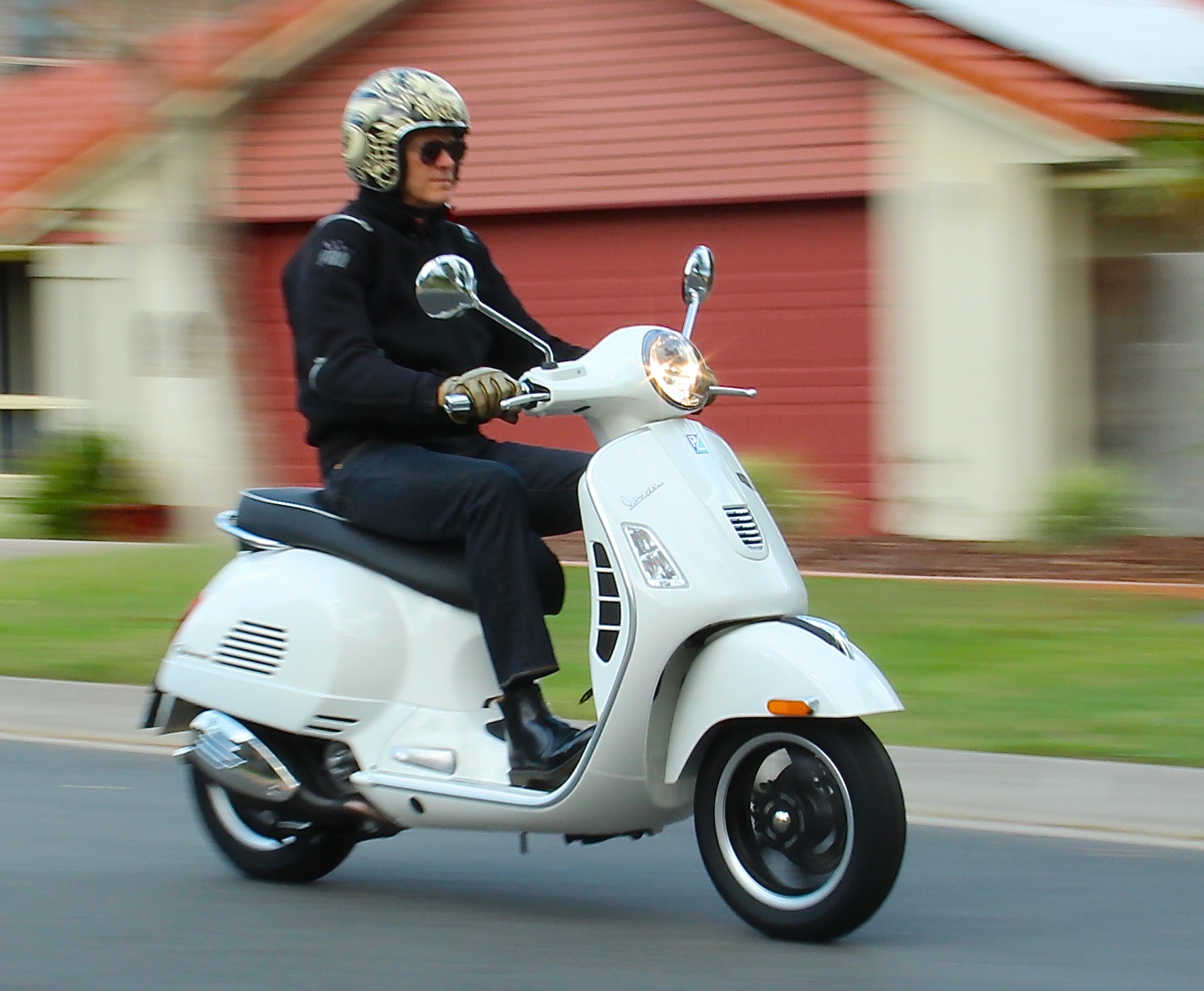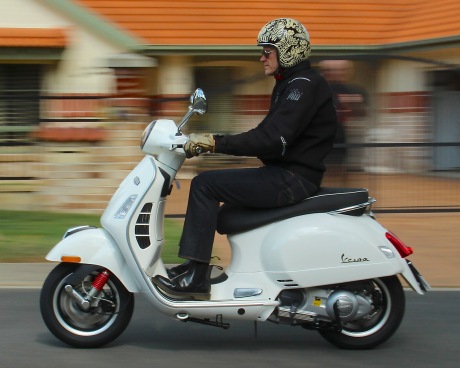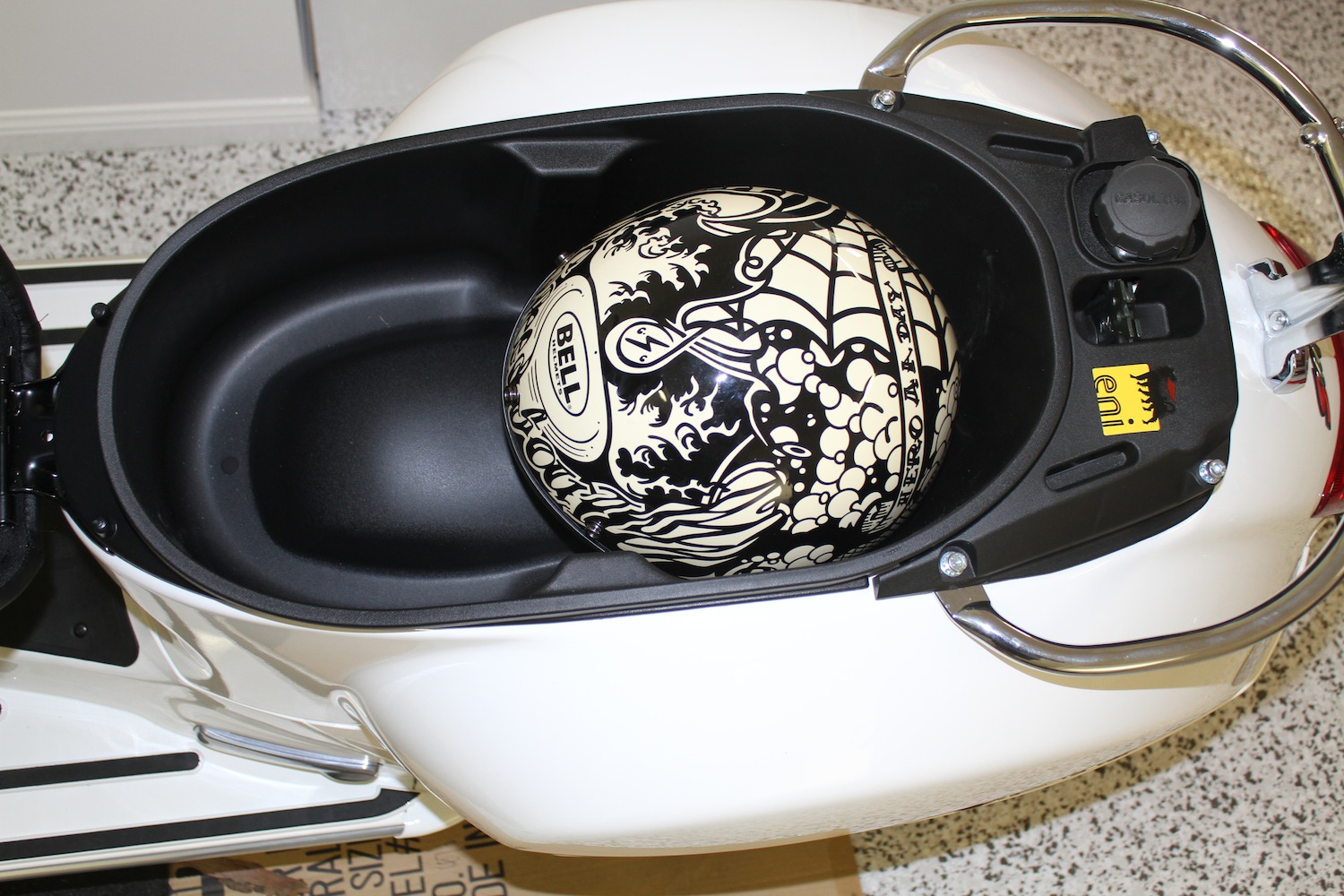Vespa GTS 300ie: Instead of saying sticking plaster, we say Bandaid.
Similarly, we tend to say Vespa instead of scooter, so ingrained is the iconic Italian scooter brand in our conscience.
Vespa means wasp in Italian because they sound like wasps when they zip along the streets.
Production started in 1946 out of purely practical needs – the streets were scarred by bombs and people needed motorised two-wheelers to avoid the potholes.
The step-through design also allowed women to ride in skirts.
In the ‘50s the Vespa became a fashion icon when Gregory peck and Audrey Hepburn rode one in the film Roman Holiday.
In the ‘60s they evolved into a cultural icon when the British Mods adopted them as a more stylish and clean form of cheap transport than oily and dirty British motorbikes.
The Mod revival in the late 1970s and early ‘80s also revived interest in scooters.
Today, they are not only a fashion accessory and cultural icon, but also a very practical means of beating the commuter traffic and city parking scarcity.

They still have a front cowl, hidden motor driving the back wheel, bench seat and small wheels.
While the headlight has now moved from the front fender to the handlebars and the spare rear tyre has gone, the Vespa still has a very similar silhouette to the model that Peck and Hepburn rode around the cobbled streets of Rome.
Top of the 10-model fleet in Australia is the Vespa GTS 300ie which comes in three variants – Super, Super Sport with a ribbed seat and extra decals, and the fully optioned Via Montenapoleone.
There have also been limited edition models such as the 300ie Vie Della Moda with brown paint and tanned seat, and the bright orange Arancio Competizione.
All share the same 278cc Quasar single-cylinder engine and continuously-variable transmission. The only differences are paint and cosmetics.
These are midi-sized scoots with plenty of room and comfort.
Your hands aren’t around your knees pressed up against the front cowl.
The bars are high and wide and there is enough room for tall adults. I’m 183cm (6’) and have no problems getting a good riding position.
Pillions are also well accommodated with a wide and well-cushioned perch, cantilevered fold-out footpegs and a generous chromed handle that goes all the way around the back of the scoot.
You can also use the handle to easily prop it up on its centrestand.
There is also an auto-retracting sidestand, although it will retract without warning, so be careful.
Although a fashion icon, they are also very practical with a grocery hook on the front cowl, a lockable glovebox (although it’s but not very deep, so it’s really only a glove-box) and lockable underseat storage for an open-face helmet and small jacket or bag.
The fuel filler also shares the underseat area, so be careful when filling up as you can splash the contents of your luggage area.
Our test scoot came in a brilliant white that exemplifies the elegant simplicity of the design.
This scoot has a solid feel and, as usual, has top-quality fit and finish.
Controls are standard and simple as is the instrumentation. you get gauges for fuel, oil temp, speedo (in km/h and mph) and warning lights for engine, fuel, oil, indicators etc.
There is also a small LCD screen that shows date and time, but no trip meter. Thankfully the fuel gauge is pretty accurate.
Besides, it will be a long way between fills with economy of 3.48L/100km and a 9.2-litre tank giving effective range of more than 250km.
Scooters are made for urban travel, but this has enough power to mix it with the big boys on the highway.
We saw 120km/h come up fairly swiftly with enough oomph at legal speeds for overtaking.
It will zip off the line promptly and climb to urban speeds in a matter of a few seconds.
At highway speed the steel monocoque frame feels stable although wind blasts from trucks can be unnerving over 90km/h, but the front cowl gives good weather protection for your lower half.
Around town it is understandably nimble without being twitchy and being bumped around by potholes and tracks in the road.
Even though the five-spoke mag wheels are only 12 inches, they have a high 70 per cent profile and 120mm width, so they are sturdy and compliant.
Together with the single-shock cantilevered front suspension with twin shock rear, they are effective in ironing out most of the lumps and bumps.
Unlike many scoots, this one has disc brakes front and rear and are quite powerful and effective. However, the back brakes hadn’t been bled properly on our test scoot an d we had to keep pumping the left lever.
We like the shrill and loud horn, the bright and wide-spread light and the big round mirrors that give plenty of vision and don’t vibrate too much.
We don’t like the lack of a trip meter, the narrow glovebox and the fuel filler under the seat.
Vespa GTS 300ie Super
- Price: $7990 ($8290 Super Sport, $9490 Via Montenapoleone)
- Warranty: 2yr/unlimited km
- Service: 1000/10,000km
- Engine: 278cc liquid-cooled, four-valve, single-cylinder
- Power: 15.8kW at 7500rpm Torque: 22.3Nm at 5000rpm
- Bore x stroke: 75mm x 63mm Transmission: auto, direct drive
- Fuel: EFI, 9.2-litre tank
- Thirst: 3.48L/100km; 80.7g/km (CO2)
- Dry weight: 148kg
- Brakes: 220mm discs with twin-piston caliper Seat: 790cm
- Wheelbase: 1370mm Tyres: Front 120/70-12, rear 130/70-12
- Suspension: non-adjustable mono-arm front shock and preload-adjustable rear twin shocks
- Web: www.vespa.com.au



